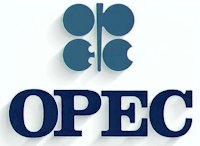Despite pressure from some of its member countries, OPEC (The Organization of the Petroleum  Exporting Countries) ended a contentious six-hour biennial meeting in Vienna on Dec. 4 without any agreement to restrain crude oil production.
Exporting Countries) ended a contentious six-hour biennial meeting in Vienna on Dec. 4 without any agreement to restrain crude oil production.
The outcome was not unexpected, as OPEC had failed to limit output by its member countries at two previous meetings. But it meant that members would continue operating their fields at near-record levels at a time when the global market is oversupplied.
Less wealthy countries, such as Iran and Venezuela, called for production cuts but were unwilling to reduce their out output. Saudi Arabia and other Persian Gulf states refused to impose a cap unless all member countries, and some non-member nations, agreed to participate.
OPEC will consider the issue at its next meeting, in June of 2016.
Some years ago OPEC abandoned setting individual production quotas for member countries in favor of an aggregate production ceiling which is currently 30 million barrels per day. But that figure is routinely exceeded by its members, and current output is about 31.5 million bbl/day.
Analysts estimate that global supply is about 2 million bbl/day greater than demand.
